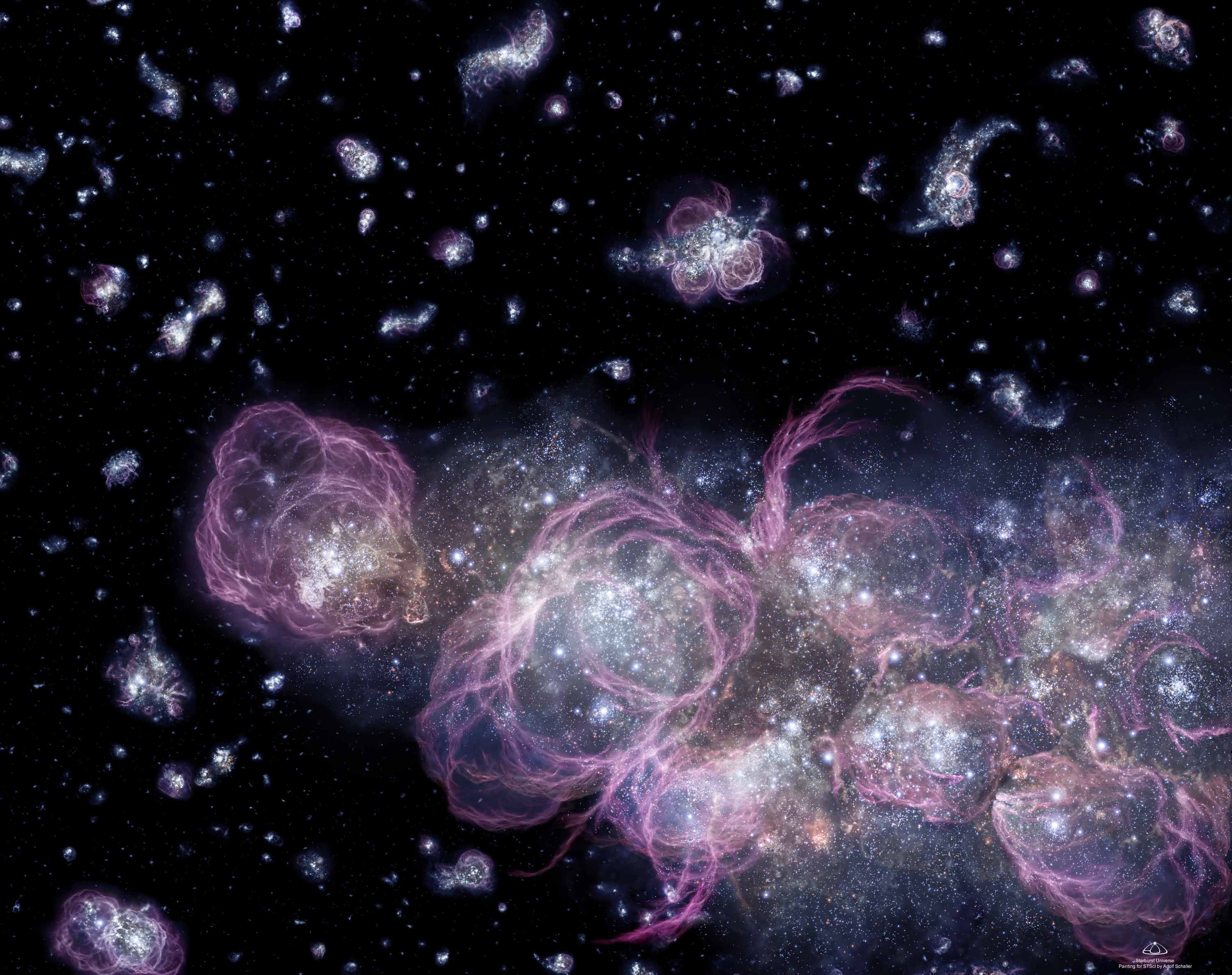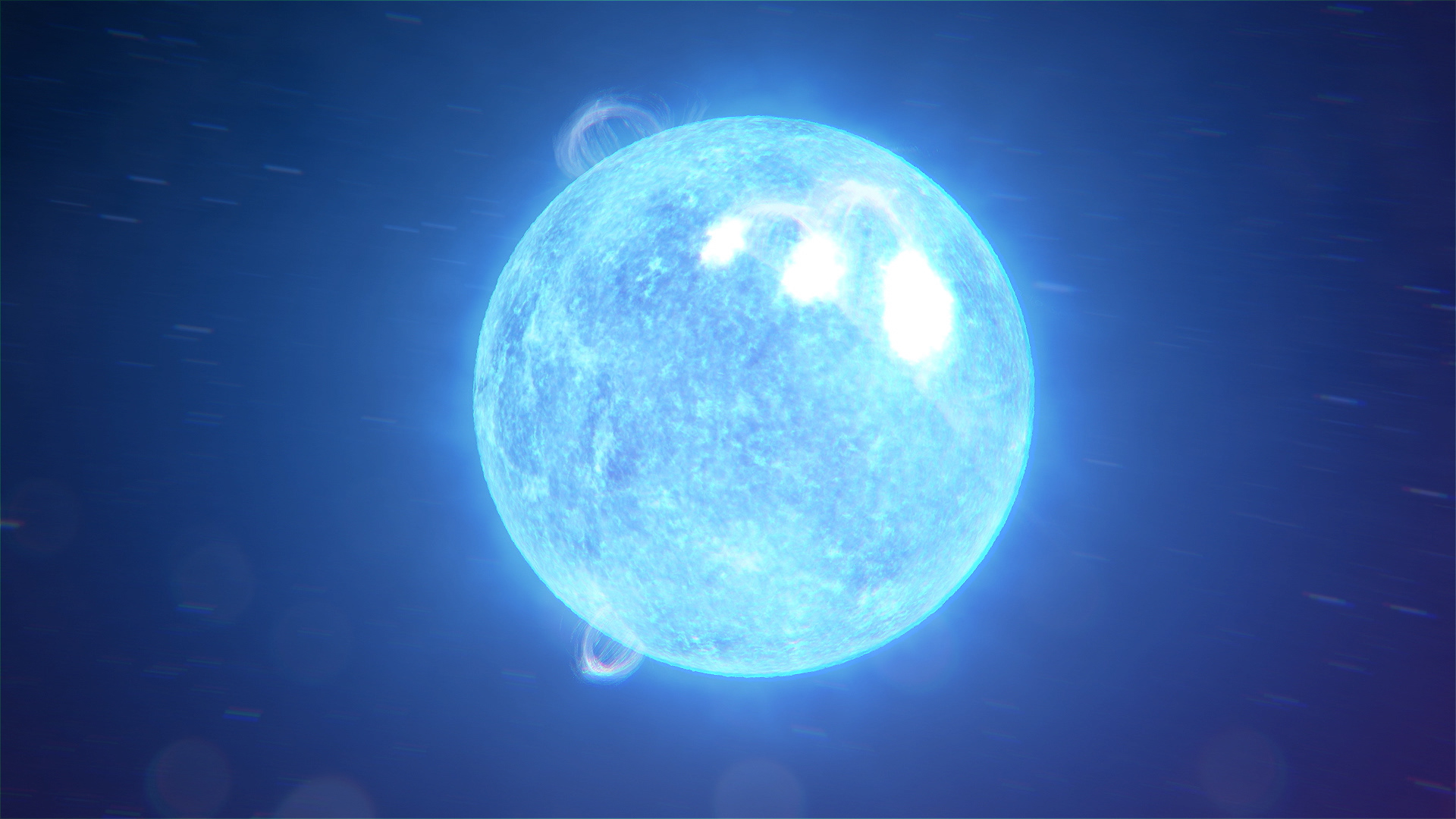Migrating Magnetar Hot Spot Animations
Animation showing a wide view of SGR 1830, a magnetar that underwent an outburst in October 2020. NICER measurements from the first day of the event show that the X-ray emission exhibited three close peaks with every rotation. Astronomers think the triple peak occurred when three individual surface regions much hotter than their surroundings spun into and out of our view from Earth. NICER tracked the magnetar nearly every day for more than a month. Over that time, the hot spots dimmed, drifted relative to each other, and two even merged – a phenomenon not seen before.
Credit: NASA's Goddard Space Flight Center Conceptual Image Lab
For the first time, NASA’s Neutron star Interior Composition Explorer (NICER) has observed the merging of multimillion-degree X-ray spots on the surface of a magnetar, a supermagnetized stellar core no larger than a city. These animations illustrate what astronomers think is going on.
In addition to the regular X-ray peaks from the magnetar's hot spots, NICER also detected dozens of powerful X-ray bursts. In this animation, quick flashes have been added to the above animation to illustrate these bursts.
Credit: NASA's Goddard Space Flight Center Conceptual Image Lab
Animation showing a closer view, with our perspective tracking the hot spots to better illustrate their migrating and merging behavior. The magnetar rotates every 10.4 seconds, so hovering above the hot spots results in a blurred starry background.
Credit: NASA's Goddard Space Flight Center Conceptual Image Lab
For More Information
Credits
Please give credit for this item to:
NASA's Goddard Space Flight Center Conceptual Image Lab
-
Animator
- Krystofer Kim (KBR Wyle Services, LLC)
-
Technical support
- Aaron E. Lepsch (ADNET Systems, Inc.)
-
Producer
- Scott Wiessinger (KBR Wyle Services, LLC)
-
Science writer
- Francis Reddy (University of Maryland College Park)
Missions
This page is related to the following missions:Series
This page can be found in the following series:Release date
This page was originally published on Tuesday, February 8, 2022.
This page was last updated on Wednesday, May 3, 2023 at 1:37 PM EDT.

